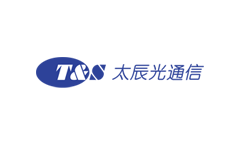Why Use Active Optical Cable?

active optical cable, also known as AOC, AOC is the abbreviation of Active Optical Fiber. At one end of the active optical cable, the data is input into an electrical signal, and the electrical signal is converted into an optical signal of a specific wavelength through a photoelectric conversion device. The optical signal is modulated and coupled and then input into the transmission optical cable. After the optical signal reaches the other end, the photoelectric detection device detects, amplifies, and processes the signals, and then the corresponding electrical signal is output. The reverse transmission principle is the same. passive optical cables have obvious price advantages over active optical cables, so why use active optical cables?
1. Features of active optical cable
With the advent of the era of big data, optical network communications are developing at a high speed, and passive optical cables or copper-based cable systems have been unable to keep up with the pace, appearing stretched, and slowly failing to meet the needs of users and data transmission. As the demand for new products as the main transmission medium for high-performance computing and data centers continues to grow, active optical cable (AOC) products have emerged.
Active optical cables are used mainly because their components can replace copper technology in data centers and high-performance computing (HPC) applications. As far as we know, passive optical cables are heavy and bulky and do not meet the high-density requirements of data centers. Moreover, due to the nature of electrical signals, electromagnetic interference (EMI) limits the performance and reliability of copper. However, active optical cables break through the limitations of passive optical cables and play an important role in high-speed data transmission.
Passive optical cables provide direct transmission between corresponding optical cables. active optical cables have the same effect, but some limitations of passive optical cables can be overcome by embedding optical or electronic components in the connector.
2. Advantages of active optical cable:
(1) Greater bandwidth: no equipment upgrade is required.
(2) Lightweight: much lighter than high-speed cables.
(3) Low electromagnetic interference: Since optical fiber is a kind of dielectric, it is not easy to be affected by electromagnetic interference.
(4) High transmission rate, long transmission distance, low energy consumption, convenient use, etc.
- +1 Like
- Add to Favorites
Recommend
- Revolutionary Active Blind Mate Optical Interconnect for Space VPX Systems
- Reason Analysis of Using AOC Active Optical Cable in Data Center Wiring
- How Is 25G AOC Active Optical Cable?
- What Is the Difference between 100G Active Optical Cable and 100G Direct Attach Cable?
- Comparison between AOC (Active Optical Cables) and Optical Transceivers
- RF-STAR‘s Active Bluetooth IC Card Enables Gas Recharging at Home
- What Factors ShouldWhat Factors Should Be Considered in Choosing a Cost-effective Active Optical Cable?
- Trelleborg Launches New Interactive Dynamoor Experience
This document is provided by Sekorm Platform for VIP exclusive service. The copyright is owned by Sekorm. Without authorization, any medias, websites or individual are not allowed to reprint. When authorizing the reprint, the link of www.sekorm.com must be indicated.






























































































































































































































































































































































































































































































































































































































































































































































































































































































